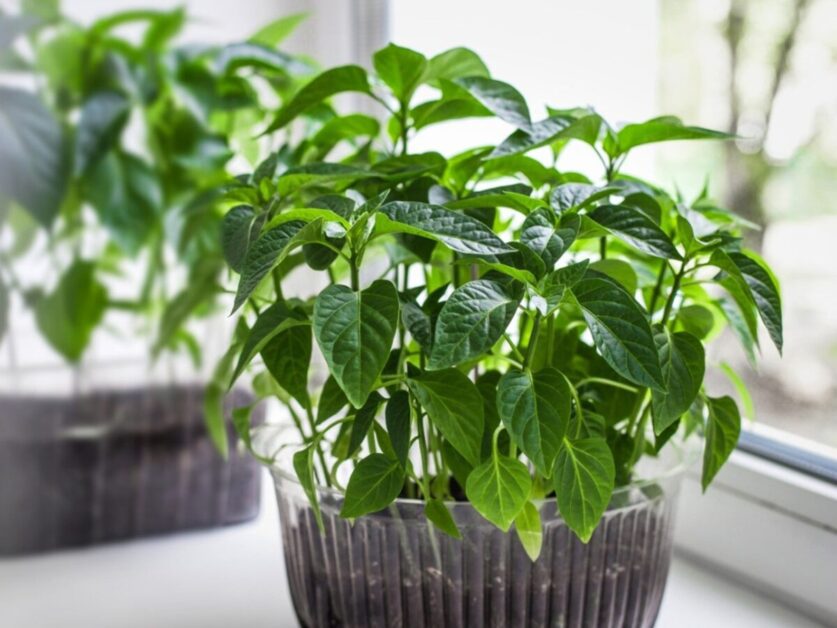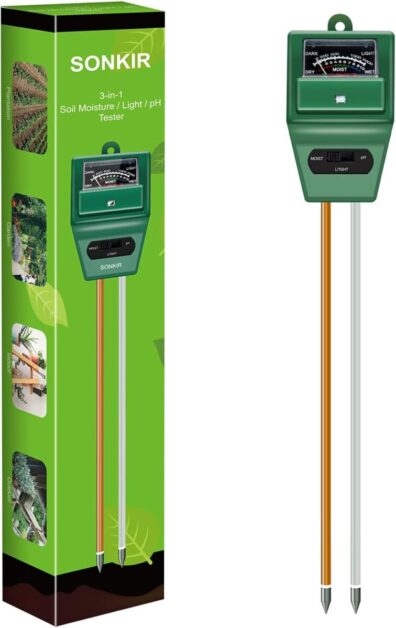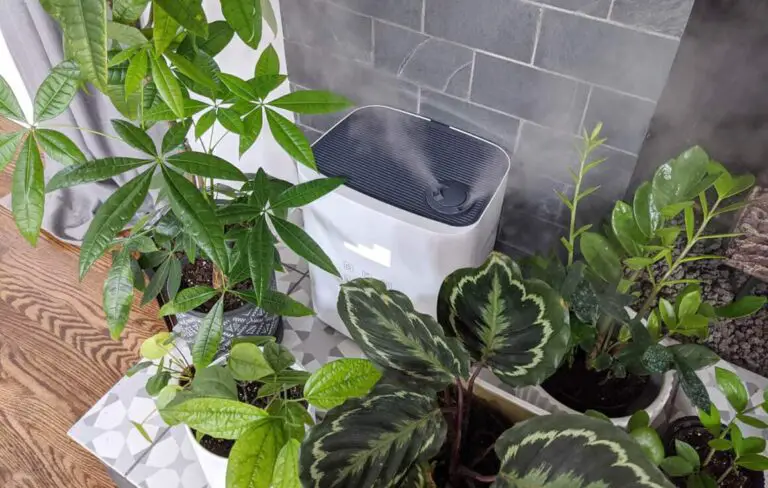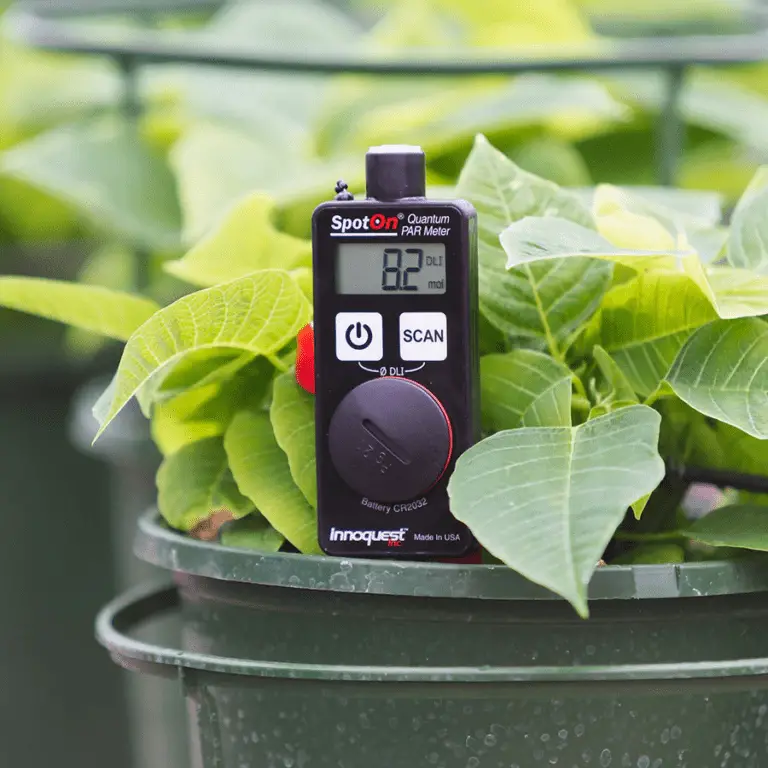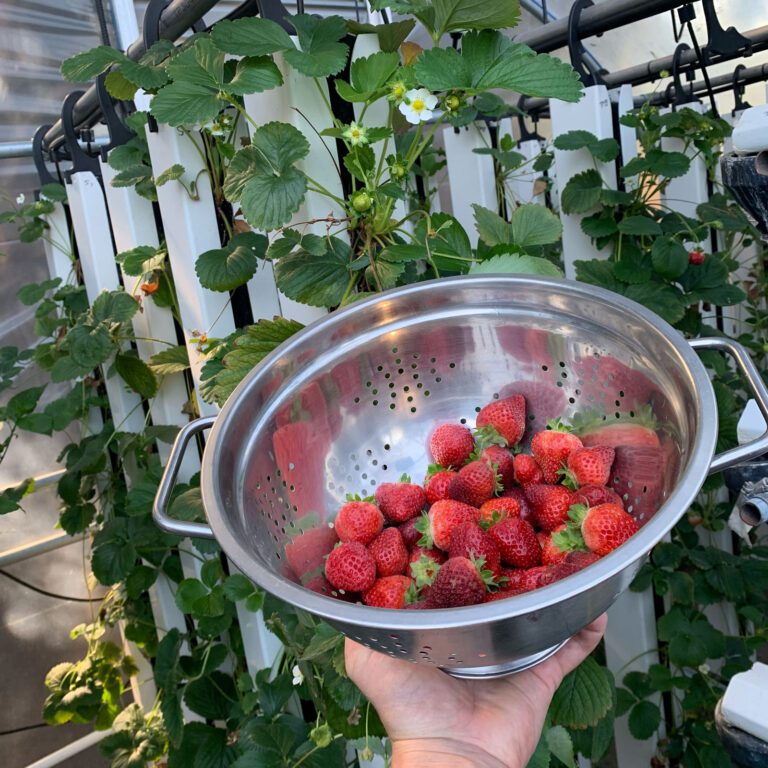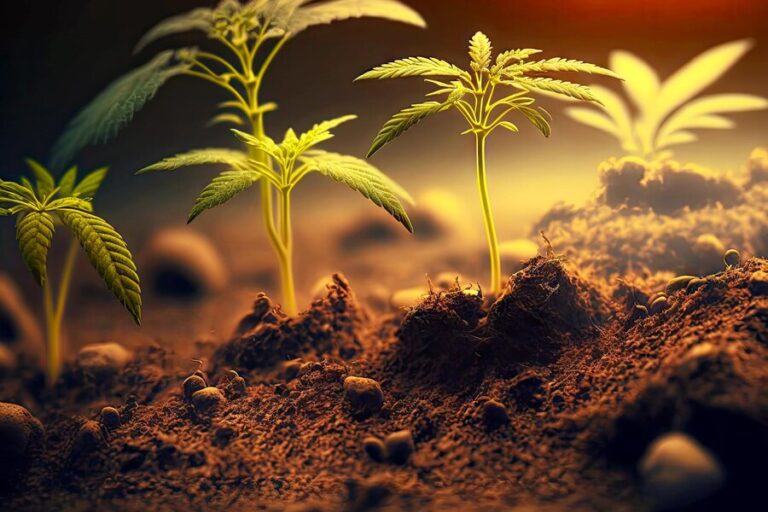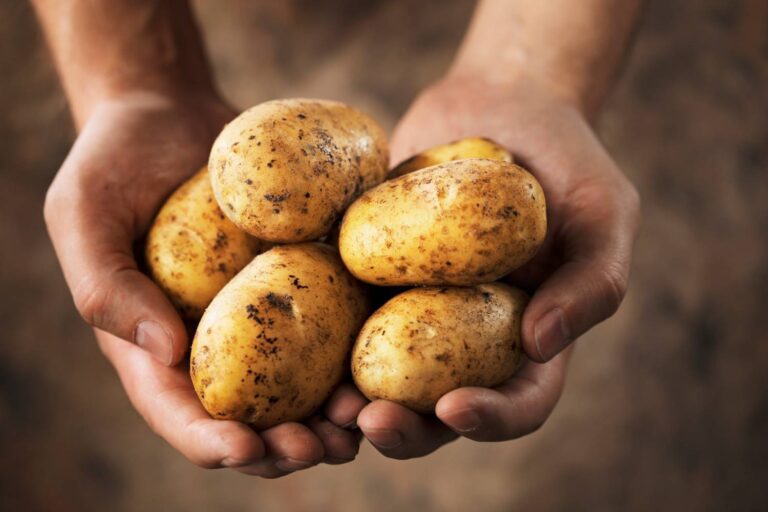Overwintering Peppers: Extending Your Plant’s Life
Are you looking to keep your pepper plants thriving beyond the summer season? Imagine enjoying fresh peppers from your garden even during the colder months. Overwintering peppers is the secret to extending the life of your plants and ensuring a continuous harvest. From providing the right care indoors to protecting them from frost, there are key strategies to help your pepper plants survive and thrive through winter.
Join us as we explore the art of overwintering peppers, sharing expert tips and techniques to keep your plants healthy and productive year-round. Get ready to elevate your gardening skills and enjoy a prolonged pepper-growing experience like never before!
Table of Contents
Understanding the Benefits of Overwintering
Overwintering peppers is a practice that can yield numerous benefits for gardening enthusiasts. One of the key advantages is the ability to enjoy an extended growing season, allowing for a continuous harvest of fresh peppers throughout the year. This is particularly beneficial in regions with short summers or unpredictable weather conditions.

- Extended Growing Season:
- Overwintering allows for a continuous harvest of fresh peppers throughout the year.
- Particularly useful in regions with short summers or unpredictable weather conditions.
- Healthier Plants:
- Providing a protected environment during colder months helps plants survive and flourish.
- Results in stronger root systems and increased productivity.
- Especially beneficial for perennial pepper varieties that struggle in harsh winters.
- Time and Cost Savings:
- Instead of starting anew each year, carry over overwintered plants from one season to the next.
- Eliminates the need for constant replanting and purchasing new plants.
- Saves time and expenses in the long run.
- Maximized Harvest:
- Understanding the benefits of overwintering ensures a year-round supply of fresh peppers.
- Promotes plant health and elevates the overall gardening experience.
In summary, overwintering peppers is a valuable technique that extends the growing season, supports plant health, and optimizes harvests. Happy gardening! 🌶️🌱
Selecting the Right Pepper Varieties for Overwintering
When selecting pepper varieties for overwintering, it is important to consider their specific characteristics and adaptability to indoor conditions. Some pepper varieties are better suited for overwintering than others, so it is crucial to choose wisely to ensure success.
| Pepper Variety | Advantages | Disadvantages | Characteristics |
|---|---|---|---|
| 1. Jalapeño | – Hardy plant: Tolerates cool temperatures. | – Moderate heat: Not as spicy as some other varieties. | – Medium-sized fruits: Green to red when ripe. |
| 2. Thai Bird’s Eye | – Compact size: Ideal for indoor containers. | – Very spicy: Intense heat level. | – Small, pointed fruits: Ripen from green to red. |
| 3. Bulgarian Carrot | – Cold-resistant: Thrives in chilly conditions. | – Medium heat: Spicier than bell peppers but milder than habaneros. | – Carrot-shaped fruits: Bright orange when mature. |
| 4. Numex Twilight | – Colorful display: Fruits change from purple to yellow to orange to red. | – Mild heat: Suitable for those who prefer less spicy peppers. | – Compact plant: Great for small spaces. |
| 5. Poblano | – Rich flavor: Mild heat with earthy, smoky taste. | – Larger plant: Requires more space. | – Heart-shaped fruits: Dark green to reddish-brown. |
| 6. Hungarian Wax | – Early producer: Yields peppers relatively quickly. | – Medium heat: Tangy and slightly spicy. | – Waxy appearance: Yellow when ripe. |
| 7. Cayenne | – High yield: Produces abundant slender fruits. | – Hot: Spicy flavor. | – Long, thin pods: Ripen from green to red. |
| 8. Tabasco | – Compact growth: Suitable for indoor containers. | – Very hot: Use sparingly. | – Small, pointed fruits: Turn from yellow-green to orange-red. |
| 9. Fish Pepper | – Unique appearance: Variegated leaves and colorful fruits. | – Medium heat: Balanced flavor. | – Historical variety: Used in African American cuisine. |
| 10. Aji Amarillo | – Distinct flavor: Fruity and slightly sweet. | – Moderate heat: Pleasantly spicy. | – Thick-walled, elongated fruits: Bright orange when ripe. |
Remember to choose pepper varieties based on your preferences, available space, and desired heat level. Happy overwintering! 🌶️🌱
Preparing Your Peppers for Overwintering
Preparing your peppers for overwintering requires careful consideration and attention to detail. As you begin this process, it is essential to assess the health and vigor of your pepper plants, ensuring that only the strongest and disease-free specimens are selected for overwintering.
Look for plants that exhibit healthy foliage, sturdy stems, and a robust root system. Remember, the plants you choose to overwinter will continue to grow and produce fruit, so it’s crucial to start with strong, vibrant specimens.

Evaluate your pepper plants for health and vigor.
Choose only the strongest and disease-free specimens for overwintering.
Look for healthy foliage, sturdy stems, and a robust root system.
Opt for plants that will continue to grow and produce fruit during the dormant phase.
Start with strong, vibrant specimens to ensure successful overwintering.
Trim damaged or excessive growth to maintain a balanced shape and size.
Aesthetically pleasing pruning also encourages optimal growth during winter.
Prior to transition, remove any existing fruits or flowers.
This diverts energy away from root development and may hinder dormancy success.
Provide proper preparation by following these steps.
Your well-cared-for peppers will thrive during the dormant phase and yield rewards in the next growing seasons.
Happy overwintering, and may your peppers flourish! 🌶️🌱
Choosing the Ideal Overwintering Location
When it comes to choosing the ideal location for overwintering peppers, there are several factors to consider.

- Ensure the overwintering location offers protection from frost and cold temperatures to prevent damage or death to the pepper plants.
- Select a sheltered spot that shields the plants from harsh winds and provides insulation like a greenhouse or a protected garden area.
- The location should receive at least six hours of direct sunlight daily to support optimal growth and fruit production for the peppers.
- Place the pepper plants near a south-facing window to maximize sunlight exposure or use supplemental grow lights to ensure they receive sufficient light intensity.
- Prioritize both protection from freezing temperatures and adequate sunlight when choosing the overwintering location to create an environment where pepper plants can thrive and continue producing peppers during the winter season.
By considering these factors, you can create a suitable environment for your pepper plants to thrive and continue producing delicious peppers throughout the winter season.
Providing Adequate Lighting for Overwintered Peppers
Providing adequate lighting is crucial for the successful overwintering of pepper plants. As the days get shorter and sunlight becomes limited, it is essential to supplement this natural light to ensure that your peppers continue to grow and thrive.
Opt for LED grow lights designed for indoor or greenhouse use.
LED lights are energy-efficient and provide a full spectrum of light necessary for plant growth.
Place the grow lights above the pepper plants to simulate natural sunlight.
Ensure even light distribution by positioning the lights appropriately.
Pepper plants require 12-16 hours of light per day during overwintering.
Use timers to maintain a consistent lighting schedule.
Keep the grow lights at an appropriate distance from the plants.
Avoid placing them too close to prevent overheating.
Promotes photosynthesis, essential for plant growth.
Maintains overall health and vigor of pepper plants.
Supports blooming and fruit production.
Remember to invest in quality grow lights and create a proper lighting regimen to ensure successful overwintering and a bountiful pepper harvest! 🌶️🌱
The SZHLUX LED Grow Light 2FT 80W (2×40W) has proven to be a valuable addition to my indoor gardening setup. Its easy installation process and impressive brightness have contributed to the healthy growth of my plants. The full spectrum coverage and adjustable height feature ensure optimal lighting conditions, while the sturdy aluminum construction enhances durability. Despite some minor assembly challenges and discrepancies in product origin, the overall performance and value of these grow lights make them a worthwhile investment for any indoor gardener.
- Full Spectrum: The SZHLUX grow light provides a full spectrum of light, including red and blue wavelengths, which are crucial for plant growth. This mimics natural sunlight and is optimal for indoor plants.
- Energy Efficiency: Despite its high performance, the grow light consumes only 80W of power while providing the equivalent output of a 600W traditional plant light. This translates to significant energy savings over time.
- Easy Installation: The plug-and-play design allows for effortless installation. It can be linked with up to four lights in a series, providing flexibility in setup. Various mounting options are available, including ceiling mounting, using a stand, or hanging the lights.
- Superior Heat Dissipation: The aluminum shell of the grow light ensures efficient heat dissipation, contributing to the longevity of the LED chips. The addition of a reflector further enhances light efficiency by up to 20%.
- Quality Assurance: The product comes with a 2-year limited warranty and 24-hour after-sale service, providing peace of mind to customers. This demonstrates the manufacturer’s commitment to quality and customer satisfactio
- Limited Connectivity: The grow light supports a maximum of four connected lights, which may be insufficient for larger indoor gardening setups. This limitation could inconvenience users with extensive plant collections.
- Dimmer Compatibility: The driver of the lights does not support use with a dimmer switch. While this may not be a concern for all users, those who require dimming capabilities for specific plant growth stages or light intensity adjustments may find this restrictive.
- Mixed Quality Control: While many customers praise the product’s performance and ease of use, some have reported issues such as lights arriving defective or experiencing flickering. This suggests potential inconsistencies in quality control or shipping processes.
Controlling Temperature and Humidity for Optimal Growth
Maintaining the proper temperature and humidity levels is essential for the optimal growth of overwintered pepper plants. These factors play a crucial role in ensuring that your plants remain healthy and productive throughout the winter months.
- Temperature Control:
- Daytime Temperature: Aim for a range of 60°F (15°C) to 70°F (21°C) during the day.
- Nighttime Temperature: Allow the temperature to drop slightly to around 55°F (13°C) at night.
- This temperature range mimics natural outdoor conditions during spring and fall, promoting healthy growth and minimizing stress on the plants.
- Humidity Management:
- Ideal Relative Humidity: Maintain a relative humidity level of 50% to 60%.
- High Humidity: High humidity can lead to fungal diseases like powdery mildew.
- Low Humidity: Low humidity may cause wilting and overall plant stress.
- Increasing Humidity: Use a humidifier or place a water-filled tray near the plants.
- Reducing High Humidity: Improve air circulation and consider using a dehumidifier.
Remember that maintaining the right temperature and humidity levels is crucial for the successful overwintering of your pepper plants. By providing these optimal conditions, you’ll ensure healthy growth and a productive harvest! 🌶️🌱
Watering and Fertilizing Overwintered Pepper Plants
Proper watering and fertilizing are key factors in ensuring the health and vitality of overwintered pepper plants. During the winter months, when the growth of peppers slows down, it is important to adjust their watering schedule accordingly. Overwatering can lead to root rot and other diseases, while underwatering can cause stress and stunted growth.
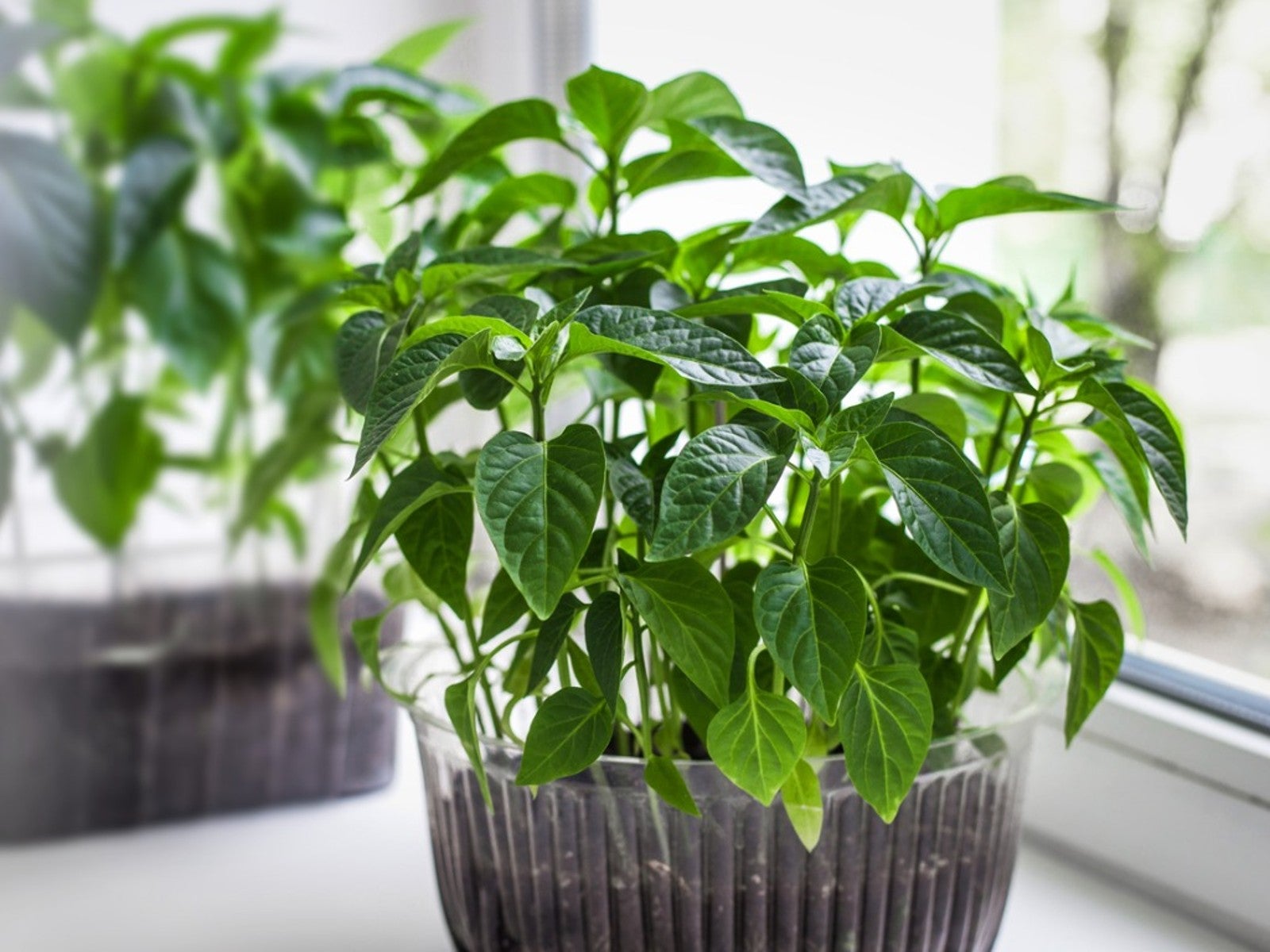
Watering:
- Frequency: Water pepper plants when the top inch of soil is dry.
- Amount: Provide enough water to moisten the soil to a depth of 6-8 inches.
- Watering Schedule: Adjust watering frequency based on weather conditions and plant needs.
- Moisture Check: Before watering, check the soil for moisture by inserting your finger about an inch deep. If the soil feels dry, it’s time to water. If it’s moist, hold off for a few more days.
Fertilizing:
- Type: Consider using a balanced fertilizer with equal parts nitrogen, phosphorus, and potassium (e.g., 10-10-10).
- Slow-Release Organic Fertilizer: Using a slow-release organic fertilizer ensures a steady nutrient supply over time.
- Application: Apply fertilizer according to the manufacturer’s instructions or based on soil test recommendations.
- Frequency: Fertilize pepper plants every 4-6 weeks during the growing season.
- Monitor Health: Regularly observe the overall health and appearance of your plants to determine if any adjustments are necessary.
Here is a sample quantitative table for watering and fertilizing overwintered pepper plants:
| Aspect | Watering | Fertilizing |
|---|---|---|
| Frequency | When top inch of soil is dry | Every 4-6 weeks during growing season |
| Amount | Moistening soil to 6-8 inches depth | Follow manufacturer’s instructions |
| Schedule | Adjust based on soil moisture and weather | – |
This table provides a structured overview of the watering and fertilizing requirements for overwintered pepper plants, ensuring proper care for healthy growth.
Pruning and Training Techniques for Overwintered Peppers
Pruning and training techniques are crucial for maintaining the health and productivity of overwintered pepper plants. By properly trimming and shaping the plants, you can optimize their growth and maximize fruit production.
- Inspect Pepper Plant for Pests & Treat Accordingly:
- Before bringing your pepper plants indoors for the winter, carefully examine them for any signs of pests or diseases.
- If you find any issues, address them promptly with appropriate treatments to ensure healthy plants during the overwintering period.
- Remove Any Remaining Fruit From Plant:
- Harvest any remaining peppers from the plant before transitioning it indoors.
- Removing fruit prevents unnecessary energy expenditure and allows the plant to focus on survival rather than ripening fruit.
- Bring Indoors & Repot If Necessary:
- Move your pepper plant indoors to a suitable location. Choose a spot with adequate sunlight (such as near a south-facing window) and consistent temperatures.
- If the plant has outgrown its current container, consider repotting it into a slightly larger pot with fresh soil.
- Reduce Watering:
- During the overwintering period, pepper plants require less water. Allow the soil to dry out slightly between waterings.
- Be cautious not to overwater, as this can lead to root rot or other issues.
- Prune When Leaves and/or Stems Start To Die:
- Overwintered pepper plants benefit from pruning before they’re taken back outdoors in the spring.
- When you prune back your pepper plants, they will regrow new branches along the nodes below the cuts.
- Remove any dead or yellowing leaves, as well as any stems that are no longer productive.
- Pruning encourages new growth and helps maintain a healthy plant structure.
- Prepare Pepper Plants To Go Back Outside in Early Spring:
- As spring approaches, gradually acclimate your pepper plants to outdoor conditions.
- Harden off the plants by exposing them to increasing amounts of sunlight and outdoor temperatures.
- Once the risk of frost has passed, transplant them back into the garden or larger containers.
Remember that each pepper variety may have specific requirements, so adapt these steps based on your plant’s needs. With proper care, your overwintered pepper plants can thrive and reward you with a bountiful harvest in the next growing season! 🌶️🌱
Preventing Pests and Diseases during the Overwintering Period
Pests and diseases can pose a significant risk to your overwintered pepper plants, but with the right prevention strategies, you can ensure their health and vitality throughout the colder months.
- Isolate New Plants:
- If you introduce new plants to your indoor garden, keep them separate from your overwintered peppers initially.
- Isolating new plants helps prevent the spread of any potential pests or diseases they might carry.
- Maintain Proper Air Circulation:
- Good air circulation is essential for preventing fungal diseases.
- Avoid overcrowding your plants, as this can lead to stagnant air and increased humidity.
- Use fans or open windows periodically to ensure fresh air exchange.
- Use Neem Oil or Insecticidal Soap:
- Neem oil and insecticidal soap are effective organic treatments for common pests.
- Spray your plants with a diluted solution of neem oil or insecticidal soap to deter aphids, spider mites, and other insects.
- Follow the instructions on the product label for safe and effective use.
- Beneficial Insects:
- Introduce beneficial insects like ladybugs or lacewings to your indoor garden.
- These natural predators feed on pests and help maintain a balanced ecosystem.
- Quarantine Infected Plants:
- If you notice signs of disease (such as leaf spots or mold), isolate the affected plant immediately.
- Quarantine prevents the spread of pathogens to healthy plants.
- Prune Diseased Branches:
- Regularly inspect your pepper plants for any signs of disease.
- If you find infected branches, prune them back to healthy tissue.
- Dispose of the pruned material away from other plants.
- Avoid Overwatering:
- Overwatering can create a favorable environment for fungal diseases.
- Water your plants only when the soil is dry to the touch, and ensure proper drainage.
Remember that proactive prevention is key to maintaining healthy pepper plants. By following these practices, you’ll minimize the risk of pests and diseases and enjoy thriving plants throughout the winter! 🌱🔍🌶️
Monitoring and Adjusting Nutrient Levels for Healthy Growth
Monitoring and adjusting nutrient levels for overwintered pepper plants is essential for their well-being.
Specific Requirements: Based on test results, adjust nutrient levels by adding fertilizers or nutrients to meet the specific needs of your plants.
pH Levels: Consider adjusting pH levels if necessary.
Guidelines: Follow recommended application rates and guidelines from reputable sources or agricultural experts to avoid over- or under-fertilization.
Remember, healthy nutrient levels contribute to thriving pepper plants even during the colder months! 🌶️🌱
I have used the Sonkir Soil Moisture Tester and the Luster Leaf Rapitest Soil Test Kit for my gardening needs, and both products have been incredibly helpful. The Sonkir Soil Moisture Tester provides accurate readings, allowing me to monitor the moisture levels of my plants with ease. On the other hand, the Luster Leaf Rapitest Soil Test Kit has been instrumental in guiding my fertilizer applications by providing detailed insights into the soil composition. Overall, these products have significantly improved my gardening experience, making it more efficient and productive.
✅ Convenient and Easy to Use: The meter is user-friendly, with a simple design and intuitive operation. Users can easily switch between functions and obtain accurate readings by following the straightforward instructions.
✅ Cost-Effective: Priced affordably, the SONKIR Soil pH Meter MS02 offers good value for money compared to purchasing separate meters for each parameter.
✅ Versatile: Suitable for both indoor and outdoor use, this soil tester can be utilized in various settings, including gardens, lawns, farms, and potted plants.
✅ Compact and Portable: With its compact size and lightweight construction, the meter is easy to carry around and store when not in use.
❌ Incompatibility with Other Liquids: The pH function of the soil tester is specifically designed for testing soil pH and cannot be used to measure the pH of other liquids, limiting its versatility in certain applications.
❌ Potential Needle Stagnation: Due to the default pH value setting and the neutral pH of most soils, the needle may appear stationary during testing, leading to confusion among users about its functionality.
❌ Durability Concerns: Some users have reported issues with the durability of the meter, including fragile construction and susceptibility to damage over time.
❌ Short Probe Length: The probe length of the meter may not be sufficient for deep soil penetration, particularly in larger outdoor garden beds or agricultural fields, potentially affecting the accuracy of moisture and pH readings.
✅ Multiple Tests: With components for 20 tests included in the kit, users can perform multiple soil analyses, allowing for thorough testing across different areas of their yard or garden.
✅ Easy-to-Use Capsule System: The kit features an easy-to-use capsule system, making the testing process straightforward for users of all experience levels. The patented color comparator system facilitates accurate readings by enabling easy color comparisons.
✅ Clear Instructions: The kit comes with simple and detailed instructions, ensuring that users can perform the tests correctly and interpret the results accurately.
✅ Value for Money: Priced reasonably, the Luster Leaf 1602 Soil Kit offers good value for money, considering its comprehensive testing capabilities and the number of tests included in the package.
❌ Plastic Waste: Some users have expressed concerns about the environmental impact of the kit due to the use of plastic cartridges for the testing capsules. There is a desire for the company to offer environmentally friendly options for future tests, such as refillable capsules or alternative materials.
❌ Interpretation Required: Like any home testing kit, interpreting the results may require some level of knowledge and understanding of soil science. While the instructions are clear, users may need to educate themselves further to make informed decisions based on the results.
❌ Limited Nutrient Testing: While the kit tests for essential nutrients like Nitrogen, Phosphorous, and Potash, it may not provide a comprehensive analysis of all soil nutrients. Users with specific nutrient concerns may need to supplement the kit with additional testing or consult professional soil testing services.
❌ Potential Variability: Users should be aware that soil composition can vary significantly within a single garden or yard. While the kit allows for testing in multiple spots, results may still vary based on factors like soil moisture, organic matter content, and soil type.
Recognizing Signs of Stress or Damage in Overwintered Peppers
- Leaf Discoloration: Yellowing or dark spots on leaves of overwintered peppers can indicate nutrient deficiency, pH imbalance, or overwatering. Lower leaves are often the first to show signs of stress.
- Wilting or Drooping Foliage: Wilting or drooping foliage may signal both underwatering and overwatering. Maintaining the right balance of hydration is crucial for the health of overwintered pepper plants.
- Stunted Growth: If pepper plants exhibit stunted growth or fail to produce new growth, factors like inadequate lighting, lack of nutrients, or poor soil drainage could be responsible. Providing sufficient light and nutrients is essential for supporting growth.
- Prompt Intervention: Recognizing signs of stress or damage in overwintered peppers allows gardeners to intervene promptly. Addressing issues like nutrient deficiencies, hydration imbalances, and growth impediments can help maintain the plants’ health and productivity.
- Proactive Care: By staying vigilant and responsive to the needs of overwintered peppers, gardeners can ensure that these plants thrive and continue to grow successfully. Regular monitoring and timely adjustments contribute to the overall well-being of the plants.
By understanding and promptly recognizing the signs of stress or damage in overwintered peppers, gardeners can take proactive steps to address these issues and promote the overall health and productivity of their plants. Stay vigilant and attentive to the needs of your peppers, and they will thrive under your care.
Overwintering Peppers in Containers or Raised Beds
When it comes to overwintering peppers, containers or raised beds can be an excellent option for gardeners with limited space or those who want to bring their pepper plants indoors during the colder months. One of the key advantages of using containers or raised beds is that they provide more control over the growing environment.

- Containers vs. Raised Beds:
- Containers: Ideal for limited space or indoor gardening. They allow flexibility in moving plants to optimal light and temperature spots.
- Raised Beds: Provide better drainage and insulation. Consider them for outdoor overwintering.
- Creating the Right Environment:
- Well-Draining Soil: Use fresh, bagged potting soil with good drainage.
- Nutrient-Rich Mix: Add compost or organic matter to create a nutrient-rich environment.
- Container and Bed Size:
- Containers: Choose at least 12 inches in diameter and depth. This accommodates the root system.
- Raised Beds: Ensure a depth of at least 12 inches for proper root development.
- Temperature Considerations:
- Cold Sensitivity: Peppers are sensitive to cold. Nightly temperatures below 55°F can stunt growth, and at 32°F, plants may die.
- Indoor Transition: Move container-grown peppers indoors to a sunny location (south-facing window) when temperatures drop.
- Overwintering Process:
- Dormancy: As peppers go dormant, they drop leaves and stop producing.
- Pest Check: Examine leaves and stems for pests.
- Temperature Control: Keep temperatures cool but not too warm.
- Light: Provide sufficient light (at least 6 hours of sunlight daily).
Remember, overwintered peppers can reward you with early-season harvests, so plan ahead and care for your plants diligently! 🌶️🌱
Overwintering Peppers in Containers vs. Raised Beds
| Aspect | Containers | Raised Beds |
|---|---|---|
| Preparation | Start with healthy plants, prune for size | Ensure plants are healthy and well-established |
| Care | Keep indoors in a frost-free spot, monitor pests, water infrequently | Monitor for pests, maintain soil health, consider indoor space limitations |
| Resurrection | Repot with fresh compost and organic fertilizer before last frost, increase watering upon regrowth | Plants rebound quickly in spring, potential for larger yields, consider genetic preservation |
| Benefits | Portable, easier to control environment | Plants rebound quickly, larger yields, potential for indoor growth |
| Drawbacks | Risk of pests, limited space for growth | Requires extra effort for maintenance, potential pest issues |
| Tips | Regularly check for pests, consider greenhouse transition | Check for pests, maintain cool temperatures, consider re-potting for space-saving |
Remember, overwintered peppers can reward you with early-season harvests, so plan ahead and care for your plants diligently! 🌶️🌱
Transitioning Overwintered Peppers Back Outdoors in Spring
As the cold winter months come to an end, it’s time to start thinking about transitioning your overwintered peppers back outdoors in spring. This process requires careful consideration and proper techniques to ensure the health and survival of your plants. Here are some important steps to follow for a successful transition.
Start in a Protected Area: Begin by placing your overwintered peppers in a sheltered spot, such as a porch or patio. This provides partial sunlight and shields them from strong winds.
Increase Sunlight Exposure: Over the next week or two, gradually expose the plants to direct sunlight. This helps them acclimate to the intensity of outdoor light and prevents sunburn or shock.
Nighttime Exposure: As temperatures become milder, gradually expose the peppers to cooler nighttime temperatures.
Move to Sunnier Location: Once acclimated, move the plants to a sunnier spot in your garden. Ensure that the soil has warmed up sufficiently.
Watch for Signs of Stress: Keep an eye out for wilting or yellowing leaves, which indicate stress. Adjust watering as needed.
Extra Protection: If necessary, provide additional protection (e.g., row covers) during chilly nights.
Transitioning takes time, so be patient. Your overwintered peppers will soon thrive outdoors and reward you with a bountiful harvest.
Happy gardening! 🌶️🌱
Common Mistakes to Avoid when Overwintering Peppers
Common Mistakes to Avoid when Overwintering Peppers:
1. Neglecting to provide adequate lighting: One of the biggest mistakes gardeners make when overwintering peppers is not ensuring they have enough light. Peppers are sun-loving plants, and without sufficient light, they can become weak and leggy. To avoid this, it is crucial to provide supplementary lighting, especially during the winter months when natural sunlight may be limited. Consider using fluorescent or LED grow lights positioned close to the plants to provide the necessary light intensity. Aim for 12-16 hours of light per day to mimic the conditions they would receive outdoors during the growing season.
2. Overwatering or underwatering: Finding the right balance of water for overwintered peppers can be tricky. Overwatering can lead to root rot and other fungal diseases, while underwatering can cause stress and stunted growth. It is essential to monitor the soil moisture levels regularly and water the plants only when the top inch of the soil feels dry. Remember that peppers prefer slightly moist but well-draining soil. To prevent waterlogged conditions, ensure the pots or containers have proper drainage holes and don’t allow the plants to sit in standing water. Additionally, using a moisture meter can help you determine precisely when it’s time to water your overwintered peppers.
Harvesting and Enjoying Peppers from Overwintered Plants
Here are some key points about harvesting and enjoying peppers from overwintered plants:

- Early Production: Overwintered pepper plants start producing fruit earlier in the season than newly planted ones due to their head start in root development and overall growth.
- Ripeness Matters: Wait until the peppers are fully ripe before harvesting. Look for the following signs:
- Firmness: Peppers should feel firm when gently pressed.
- Glossy Appearance: A shiny surface indicates ripeness.
- Color: The specific color varies by variety (e.g., green, red, yellow, or purple). Refer to seed packets or plant tags for guidance.
- Harvesting Technique:
- Use sharp scissors or garden shears to cut the peppers from the plant.
- Leave a short stem attached to the pepper.
- Avoid pulling or twisting, as it can harm the plant.
- Storage and Use:
- Store harvested peppers in the refrigerator for up to a week.
- Incorporate them into your favorite recipes immediately for maximum flavor.
- Rewarding Experience: Enjoying overwintered peppers is a testament to your dedication as a gardener. Savor the sweet and spicy flavors!
Happy harvesting! 🌶️🌱
Success Stories: Inspiring Experiences with Overwintered Peppers
John Smith’s Success Story:
- Approach: John meticulously selected healthy plants, transplanted them into containers, and provided optimal growing conditions indoors.
- Results: Witnessed vigorous growth and abundant fruit production, leading to flavorful and juicy peppers.
- Key Factors: Attributes success to adequate lighting, temperature and humidity control, and diligent monitoring of nutrient levels.
- Harvest: Enjoyed a bountiful harvest even during colder months, showcasing the benefits of overwintering.
Jane Thompson’s Success Story:
- Strategy: Jane overwintered pepper plants in raised beds, focusing on compact varieties suitable for containers in limited urban space.
- Soil Preparation: Ensured soil richness in organic matter to provide essential nutrients for plant growth.
- Plant Care: Protected plants from pests and diseases through preventative measures and regular health monitoring.
- Results: Achieved beautiful plants and a generous harvest of peppers, attributing success to proper pruning, training, watering, and fertilization.
- Benefits: Maintained compact and healthy plant structure, showcasing the advantages of overwintering for urban gardeners.
These stories highlight the success achievable through overwintering peppers, emphasizing the importance of tailored care, attention to detail, and the potential to extend the growing season for fresh, homegrown peppers year-round.
Watch video for more information:
FAQ
What is overwintering and why is it beneficial for pepper plants?
Overwintering is the process of protecting and preserving pepper plants during the winter months. It is beneficial because it allows the plants to survive and resume growth in the following spring, resulting in earlier harvests and larger yields.
How do I choose the right pepper varieties for overwintering?
When selecting pepper varieties for overwintering, it is important to choose those that are known for their cold tolerance and adaptability to indoor conditions. Look for varieties that have been successfully overwintered by other gardeners and have a shorter growing season.
What are some important steps to prepare my peppers for overwintering?
To prepare peppers for overwintering, it is essential to prune them back, remove any diseased or damaged foliage, and gently clean the plants to reduce the risk of pests and diseases. Additionally, make sure to provide a thorough watering before bringing the plants indoors.
How do I choose the ideal location for overwintering my peppers?
When choosing a location for overwintering peppers, look for a spot that receives adequate sunlight and has consistent temperatures, preferably between 55-70°F (13-21°C). It should also have good air circulation and protection from drafts.
How can I provide adequate lighting for my overwintered peppers?
Supplemental lighting is crucial for overwintered peppers, especially when natural sunlight is limited. Use full-spectrum grow lights placed close to the plants, providing them with 12-16 hours of light per day.
What are the ideal temperature and humidity conditions for overwintered peppers?
Overwintered peppers thrive in temperatures between 55-70°F (13-21°C) during the day and slightly cooler temperatures at night. The humidity level should be around 40-60% to avoid excessive moisture that may encourage diseases.
How often should I water and fertilize my overwintered pepper plants?
Water your overwintered pepper plants thoroughly whenever the top inch of soil feels dry. Fertilize them every 4-6 weeks with a balanced liquid fertilizer, following the manufacturer’s instructions for dilution.
Are there any pruning and training techniques I should follow for overwintered peppers?
Yes, regularly prune your overwintered peppers to encourage bushier growth and remove any dead or diseased branches. Use stakes or trellises to support the plants and train them to grow upright.
How can I prevent pests and diseases during the overwintering period?
To prevent pests, regularly inspect your overwintered pepper plants for signs of infestation and take immediate action if necessary. Keep the area around the plants clean and free from debris. Maintaining proper air circulation and avoiding overwatering helps prevent diseases.
How do I monitor and adjust nutrient levels for healthy growth during overwintering?
Regularly check the nutrient levels of the soil or growing medium by using a soil testing kit. Adjust the nutrient levels by adding organic fertilizers or amendments as needed, ensuring that the plants receive a balanced diet.
What are some signs of stress or damage that I should look out for in overwintered peppers?
Some signs of stress or damage in overwintered peppers include yellowing or wilting leaves, stunted growth, leaf drop, and pest infestation. These signs may indicate a lack of proper lighting, nutrient deficiency, or pest problems.
Can I overwinter peppers in containers or raised beds?
Yes, peppers can be successfully overwintered in containers or raised beds. Just make sure the containers or beds are large enough to accommodate the plants’ root systems and provide proper drainage.
How do I transition overwintered peppers back outdoors in spring?
Gradually expose your overwintered peppers to outdoor conditions by placing them in a sheltered area for a few hours each day, gradually increasing the time over a week or two. This process, known as hardening off, helps the plants acclimate to the outdoor environment.
What are some common mistakes to avoid when overwintering peppers?
Some common mistakes to avoid when overwintering peppers include overwatering, inadequate lighting, neglecting pest and disease prevention, using improper containers or soil, and abrupt temperature changes.
When can I expect to harvest peppers from overwintered plants?
The timing of pepper harvests from overwintered plants will depend on the specific variety and growing conditions. However, you can generally expect to harvest peppers earlier than if you were to start from seeds or transplants in the spring.

Studied Agricultural Engineering-Plant Protection at University of California, Davis.
Head of Content writing team at Southelmontehydroponics.com

